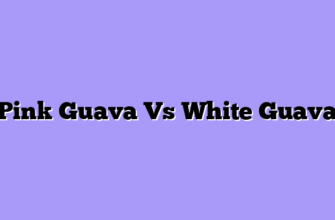You know what’s funny about being an exotic fruit farmer? People always assume I spend my days lounging in some tropical paradise, sampling exotic fruits while sipping coconut water. Well, let me tell you, it’s a lot more mud, sweat, and careful planning than that! Today, I want to share my journey with two fascinating fruits that have stolen my heart: the humble guava (Psidium guajava) and the mysterious fig (Ficus carica).
The Sweet Beginning
When I first started my exotic fruit farm fifteen years ago, I had no idea these two fruits would become the stars of my operation. Guava, also known as yellow guava, common guava, or apple guava in various parts of the world, was actually my grandmother’s suggestion. “Anna,” she said, “if you’re going to grow something exotic, make sure it’s worth the effort.” And boy, was she right!

Both fruits have their quirks and challenges, but they’ve taught me more about farming than any textbook ever could. The guava trees are like enthusiastic puppies – they grow quickly and produce fruit abundantly, while fig trees are more like wise old cats – particular about their conditions but rewarding when properly cared for.
Would you believe that my initial half-acre experiment has now grown into a 15-acre operation? Talk about nature’s surprises!
The Growing Game
Let me tell you about the dance of cultivation – because that’s exactly what it is. Growing guava (or peegwah, as my Caribbean workers call it) is like teaching a child to ride a bike. You need to provide support initially, but once it gets going, it’s unstoppable. These trees are surprisingly resilient and can handle various soil conditions, though they definitely have their preferences.
Figs, however… oh, figs are the divas of my orchard! The Mediterranean fig, as some call it, demands specific conditions like a Hollywood star in their contract. They need just the right amount of water, the perfect soil pH, and don’t even get me started on the pollination process – it’s a whole soap opera involving tiny wasps!
Here’s what I’ve learned works best for each:
- For Guava:
- Well-draining soil with pH 5-7
- Full sun exposure
- Regular watering but not waterlogging
- Annual pruning for better fruit production
- For Figs:
- Mediterranean-like conditions
- Protection from strong winds
- Slightly alkaline soil
- Deep watering but less frequent
The Harvest Dance
Harvesting these fruits is where the real fun begins. Guava fruits (or bayabas, as my Filipino friends say) give you clear signals when they’re ready – their color changes from deep green to a yellowish hue, and they fill the air with their sweet, tropical perfume. It’s like they’re sending out party invitations saying, “Come and get me!”
Figs, though? They’re the mysterious ones. Timing their harvest is crucial – too early and you get bland, rubbery fruit; too late and they’re overripe. I’ve developed what I call the “gentle squeeze test” – when they yield slightly to pressure but aren’t mushy, that’s your golden moment. It’s taken years to perfect this touch, and I still sometimes get it wrong!

I remember one particularly hectic harvest season when both crops decided to ripen simultaneously. My small team and I worked from sunrise to sunset, racing against time. We even had to hire local students to help with the picking. Talk about a crash course in farm management!
Nature’s Sweet Rewards
After all the hard work, nothing beats the satisfaction of seeing these fruits make their way to appreciative customers. The tropical guava, with its unique flavor profile somewhere between strawberries and pears, has become a local favorite at our farmers’ markets. Some customers drive hours just to get their hands on these aromatic gems!
As for figs, well, they’ve developed almost a cult following. These sweet, seedy fruits have inspired local chefs to create amazing dishes. Last summer, a renowned restaurant in the city started featuring our figs in their signature dessert – a honey-drizzled fig tart that’s absolutely divine.
The best part? Watching people’s faces light up when they taste a perfectly ripe guava or fig for the first time. It’s like witnessing someone discover a new color – pure magic! Sometimes I set up tasting sessions at the farm, pairing different varieties of both fruits with local cheeses and wines. These events have become so popular that we now have a waiting list!
Looking back at my journey with these two remarkable fruits, I can’t help but feel grateful. They’ve taught me patience, resilience, and the importance of working with nature rather than against it. Whether it’s the guava’s generous nature or the fig’s mysterious charm, each has contributed to making my farm what it is today – a little slice of exotic paradise right here in our community.








